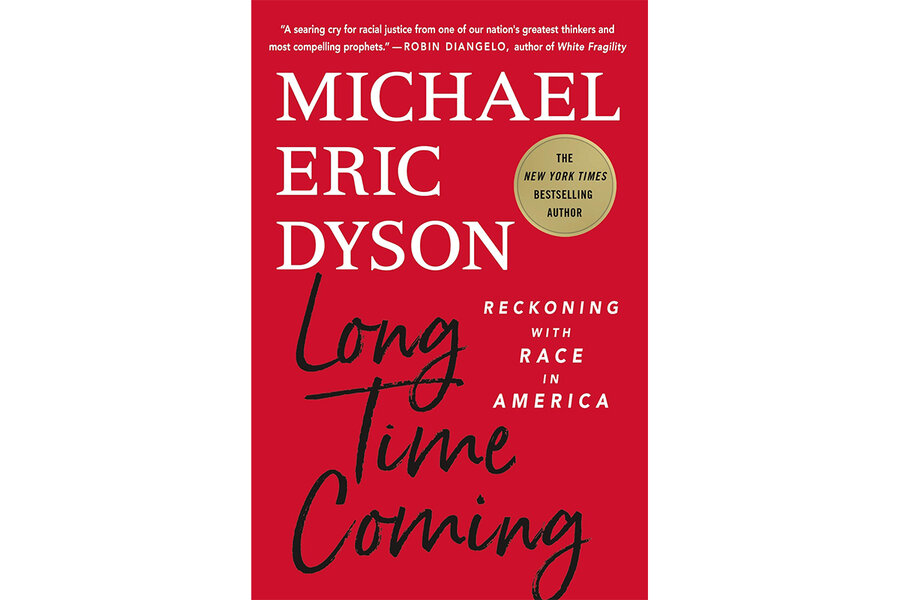‘Long Time Coming’ excavates the origins of modern-day racism
Loading...
Michael Eric Dyson’s “Long Time Coming: Reckoning with Race in America” is not an easy read. That’s not because of its length – it’s only 240 pages – or its language: Dyson’s dynamic writing is interwoven with historical accounts, and the first-person narration makes the book easy to devour in just a few sittings. Rather, it’s the content of the book that makes it harder to digest. This is not a pleasure read.
In “Long Time Coming,” Dyson takes a snapshot of 2020, noting the rapid spread of COVID-19, the flames of protests heating up across the country, and the global outcry denouncing police brutality and white supremacy after the deaths of Breonna Taylor, George Floyd, and Ahmaud Arbery.
With adept vision, Dyson then unfurls the twisted roots of history that led to these events. In chapters addressed to Emmett Till, Eric Garner, Breonna Taylor, Hadiya Pendleton, and Sandra Bland, “Long Time Coming” takes an unflinching look into the heart of racism in America. The police killings of Black people are addressed in the chapter dedicated to Garner, which relates in unflinching detail the last words spoken by George Floyd. Dyson takes aim at cultural appropriation in the chapter titled “White Theft,” astutely examining the complex history of Black imagination and the white supremacist systems created to stamp it out.
As social justice protests have increased, many people have sought to educate themselves on racism in America. Seeing how the past directly influences and impacts the present is an essential part of understanding systemic oppression. “Long Time Coming” is the perfect primer in that regard, providing brief but detailed accounts on a range of topics – including how slave patrols gave rise to the current policing system, and how the Emmett Till case and the fear of Black bodies connects to Ahmaud Arbery. Dyson clearly and succinctly lays out America’s past and present, and draws lines between their commonalities.
The detailed descriptions of Black death are plentiful throughout “Long Time Coming.” If you’re sensitive to this, as I am, be warned. You’ll probably want to read this book in short doses, especially if you’re a Black person. I often found myself crying, lost in an emotional vortex, while trying to get through some of the parts in the chapters addressed to Eric Garner and Breonna Taylor. This emotive impact is important in proving Dyson’s overarching point, especially for white readers. But as a Black person, reading “Long Time Coming” felt a bit like rewatching clips of my life’s most painful memories. Dyson himself seems to share this pain. Regarding George Floyd’s death, he writes, “We saw him, yes, but we felt him even more.” Indeed, readers will feel the depictions of Black death in “Long Time Coming,” particularly for those who already live each day under the thumb of racial injustice.
While “Long Time Coming” certainly has a strong beginning, it stumbles in the fourth chapter. In the first three parts, Dyson excavates the origins of the police state, Black imagination, and Black bodies. But the fourth – which is dedicated to Hadiya Pendleton, who was shot and killed by a young Black man – is a total curveball: Dyson turns his attention to cancel culture. The introduction of the topic is abrupt, and the chapter seems out of place as a whole. An issue like mass incarceration would have been a more appropriate fit. Fortunately, the last chapter (addressed to Sandra Bland) returns to form with a call to examine how “white comfort” functions.
If you’re a marginalized person well-versed on history and systemic oppression, “Long Time Coming” may not be the book for you. It will open up some wounds, and the questions and suggestions Dyson makes are not novel or surprising. But if you’re looking to learn more about racism in America or need clarity on how American history has influenced the present, “Long Time Coming” is an essential book. Thanks to his adept storytelling, Dyson has stitched together a cohesive literary quilt made of a lively narrative and plenty of archival details.






